Whether you are proactive or reactive in dealing with dampness at home, there is a lot to be said for installing a damp proof course. There are many things to consider when looking for the most appropriate damp proofing system, and budget will always be a critical issue.
One of the biggest factors in the cost of a damp proof system is how long it lasts. At DryCore, we aim to assist you make an informed decision on all damp prevention and solution matters. Whether you are dealing with rising damp, or penetrating damp, and whether you have an existing damp proof course in place or not, we are here to ensure you know how long to expect your solution will last.
To learn more about what is damp proofing, take a look at our post.
While it would be great if there was a universal lifespan of damp proof work, this isn’t the case. There are many factors that affect the lifespan of damp proof work, including the following issues:
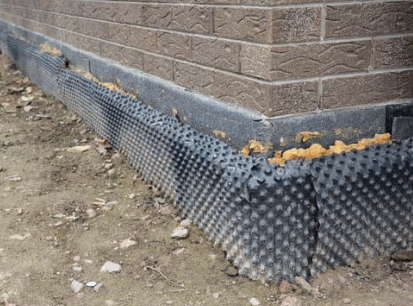
The quality of materials used for damp proofing and the level of expertise in the installation process significantly impact the lifespan of the proofing solution. High-quality materials, such as durable membranes or reliable chemical compounds, are more likely to withstand moisture exposure over an extended period.
Likewise, professional installation ensures proper adherence and effectiveness of the damp proof system, reducing the risk of premature failure.
The choice of damp proofing method employed also plays a role in determining the lifespan of the solution. Different methods, such as chemical DPC, damp proof membrane solutions, or electro-osmotic systems, have varying levels of durability.
Some methods may offer long-term protection against moisture ingress, while others may require periodic maintenance or reapplication. Understanding the strengths and limitations of each method helps in selecting the most suitable option for the specific circumstances.
Regular maintenance and inspections are crucial for ensuring the longevity of a damp proofing course. Periodic inspections allow for the identification of any signs of wear, damage, or deterioration in the damp system.
Timely repairs or necessary maintenance can be carried out to address these issues, preventing further damage and extending the lifespan of the damp proofing solution. Neglecting maintenance and inspections may lead to the development of problems that can compromise the effectiveness of a damp proof course over time.
Our post "How Long Does A Damp Proof Course Last" maybe interest you. You can check it out.
The climate and environmental conditions in which the building is located can have a significant impact on the lifespan of damp proofing. Extreme weather conditions, such as heavy rainfall, high humidity, or freeze-thaw cycles, can subject a damp proof course system to additional stress and increase the risk of degradation.
Buildings in coastal areas may be exposed to saltwater corrosion, which can affect the effectiveness of certain proofing methods. Adapting the choice of damp proofing course solution to the specific climate and environmental factors helps in achieving longer-lasting protection against moisture.
The severity of moisture issues present before damp proofing can affect the lifespan of the solution. If the building had significant existing moisture problems, such as rising damp or extensive water infiltration, the underlying damage may persist even after damp proofing.
In such cases, it is crucial to address the underlying moisture issues before applying the damp proof system.
Failure to eliminate the root cause of problems can result in continued degradation of the proofing and potential recurrence of moisture-related issues.

There are a number of ways in dealing with rising and penetrating damp
Chemical Damp Proof Courses (DPC) involve the injection of chemical compounds into the walls to create a barrier against rising damp. The lifespan of (DPC) can vary depending on factors such as material quality and installation expertise. On average, a well-installed chemical DPC can last between 20 to 30 years or more.
However, the actual lifespan of damp proof injection solutions varies based on the specific materials used, the thickness and coverage of the DPC layer, and the level of workmanship during installation.
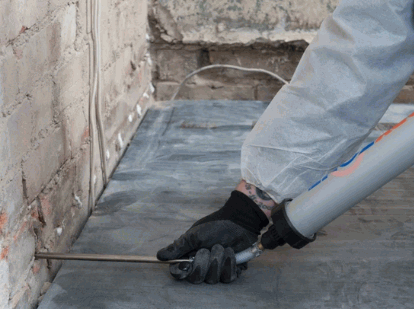
Several factors can influence the lifespan of chemical DPC:
Quality Of chemicals: Using high-quality chemical compounds that are specifically designed for a damp proof solution can enhance the durability and longevity of the DPC.
Proper Installation: The expertise and skill of the installer incorrectly injecting the chemicals at the appropriate depth and spacing are crucial for the effectiveness and lifespan of the DPC.
Existing Moisture Issues: If there are underlying moisture problems that are not properly addressed before applying the chemical DPC, it may lead to continued intrusion and potential deterioration of the DPC over time.
Over time, chemical DPC can experience deterioration, compromising its effectiveness. Signs of deterioration may include the appearance of damp patches, discoloration, mould growth, or a musty odour or nasty smell.
If these signs are observed, it is essential to seek professional advice. Reapplication of chemical DPC may be necessary, involving injecting new chemicals into the affected areas to restore and reinforce the chemical damp proof course.
DPMs are physical barriers made of materials such as plastic, bitumen, or rubber that prevent moisture from penetrating the building's structure. DPM solutions are known for their durability and can have long lifespans when properly installed and maintained.
The expected lifespan of DPMs can range from 20 to 50 years or more, depending on the specific type of membrane used and the quality of installation. High-density polyethylene (HDPE) membranes are typically recognised for their longevity and can provide effective damp proofing for several decades.
You can also check out our post "How To Install Damp Proof Membrane On Concrete Floor" for more additional insights.
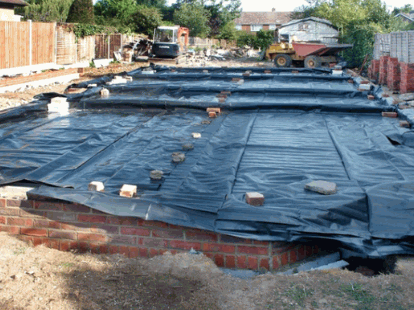
The lifespan of DPM can be influenced by various factors:
Material Quality: Using high-quality DPM materials that are resistant to degradation, such as high-density polyethylene (HDPE), enhances the durability and longevity of the membrane.
Installation Quality: Proper installation, including ensuring full coverage and secure fixing, is essential for maximising the effectiveness and lifespan of the DPM.
Environmental Factors: Extreme temperatures, UV exposure, and chemical exposure can impact the lifespan of DPM. Using materials specifically designed for the expected environmental conditions helps maintain the longevity of the membrane.
While DPMs are durable, they can still experience wear and tear over time. Signs that indicate the need for repair or replacement of DPMs include structural damage like cracks, tears, or punctures in the membrane, detachment from the surface, or signs of water seepage around skirting boards or walls.
If these signs are observed, it is crucial to have the DPM inspected by a professional. Repairs may involve patching or replacing the damaged section, ensuring the continued effectiveness of the damp proofing.
Electro-Osmotic Damp Proofing involves the use of an electrical system to create a low-level electric field within the walls, which repels rising damp. Electro-Osmotic Damp Proofing systems have the potential for long lifespans.
When correctly installed, these systems can provide an effective damp proof course for many years, even indefinitely. The longevity of electro-osmotic systems is influenced by factors such as the quality of materials used, proper installation techniques, and regular maintenance.
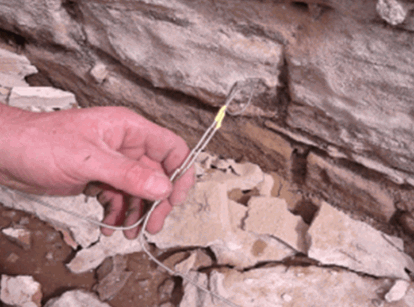
The effectiveness and durability of electro-osmotic systems can be influenced by:
System Quality: Investing in a high-quality electro-osmotic system with reliable components and technology increases the effectiveness and longevity of the system.
Proper Installation And Maintenance: Ensuring the system is installed correctly and conducting regular inspections and maintenance helps maintain its performance and longevity.
Electrical Power Supply: A consistent and reliable power supply is necessary for the continuous operation of the electro-osmotic system.
While electro-osmotic systems are designed to be long-lasting, there can be instances of system failure. Indications of system failure may include a lack of dampness reduction, increased moisture levels, or electrical malfunctions.
If in doubt, speak with a damp proof course specialist who can assess the system, identify the underlying issues, and recommend appropriate actions, which may involve repairs, component replacements, or system upgrades.
To learn more about what is a damp proof course, take a look at our post.
To best protect your damp proof course and extend its lifespan, please take the following steps.
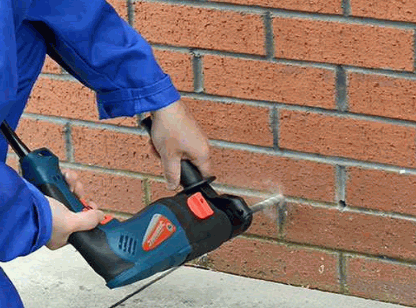
Conducting regular inspections and monitoring of the damp proof course system is essential for maintaining its longevity. Schedule periodic assessments to check for any structural problems or signs of damage, wear, or deterioration. Inspect walls, ceilings, and other treated areas for damp issues, loss of colour, or mould growth.
Promptly addressing any issues identified during inspections helps prevent further damage and ensures the continued effectiveness of the damp proof course. A long-term solution will save money and stop moisture, boosting the structural integrity of your property.
If any damage or deterioration is identified during inspections, it is crucial to initiate prompt repairs and maintenance. Addressing issues early can prevent them from escalating and potentially compromising the integrity of the damp proof course.
Replace damaged or deteriorated materials, such as cracked membranes or areas with compromised chemical DPC, to maintain the functionality of the proofing solution.
Adequate ventilation and moisture control measures play a vital role in preserving the effectiveness of damp proofing. Ensure proper air circulation within the building, especially in areas prone to moisture accumulation, such as bathrooms, kitchens, or basements. Use exhaust fans, dehumidifiers, or natural ventilation strategies to reduce humidity levels. Additionally, address any plumbing leaks or sources of excessive moisture to reduce the strain on the damp proof course.
To ensure long-lasting damp proofing, it is crucial to address any underlying moisture sources that may contribute to dampness or water infiltration. Identify and rectify issues such as leaky pipes, roof leaks, faulty gutters, or inadequate drainage. By addressing these underlying causes, you can prevent continuous exposure to wetness and reduce the workload on the damp proof course, improving its effectiveness and extending its lifespan.
By implementing a comprehensive maintenance plan that includes regular inspections, prompt repairs, proper ventilation, and addressing underlying condensation sources, homeowners can maximise the lifespan and effectiveness of a damp proof course. Taking a proactive approach to maintenance not only helps preserve the integrity of the damp proofing but also protects the building's structure and promotes a healthy living environment.
The duration of a damp proofing guarantee can vary depending on several factors, including the type of damp proof course method used, the company or contractor providing the guarantee, and the terms and conditions outlined in the guarantee itself. Typically, damp proofing guarantees range from 10 to 30 years. For more learnings, you can check out our post "How To Damp Proof A Wall".
To determine if you need a new damp proof course (DPC), look for signs such as visible dampness on walls, nasty smells, rotting woodwork, cold and damp walls, and increased condensation. These signs suggest the presence of dampness and the potential need for a new DPC.
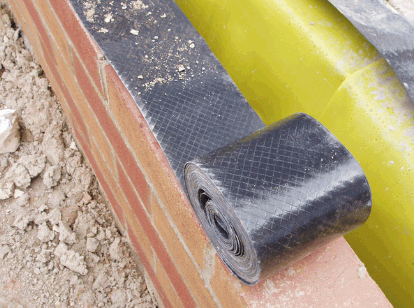
No, damp does not always come back. Properly implemented and maintained damp proofing solutions can effectively prevent its recurrence. By addressing underlying condensation sources, performing regular inspections and maintenance, maintaining proper ventilation, and monitoring moisture levels, dampness can be effectively prevented from returning.
The longer your existing damp course works, the lower the overall damp proofing cost is. At DryCore, we want you to find the damp proof solution that works best for you, and which provides you with the most confidence in dealing with damp problems at home.
Don't miss the opportunity to explore our post named "How Much Does Damp Proofing Cost" for a wealth of supplementary information and expert advice.